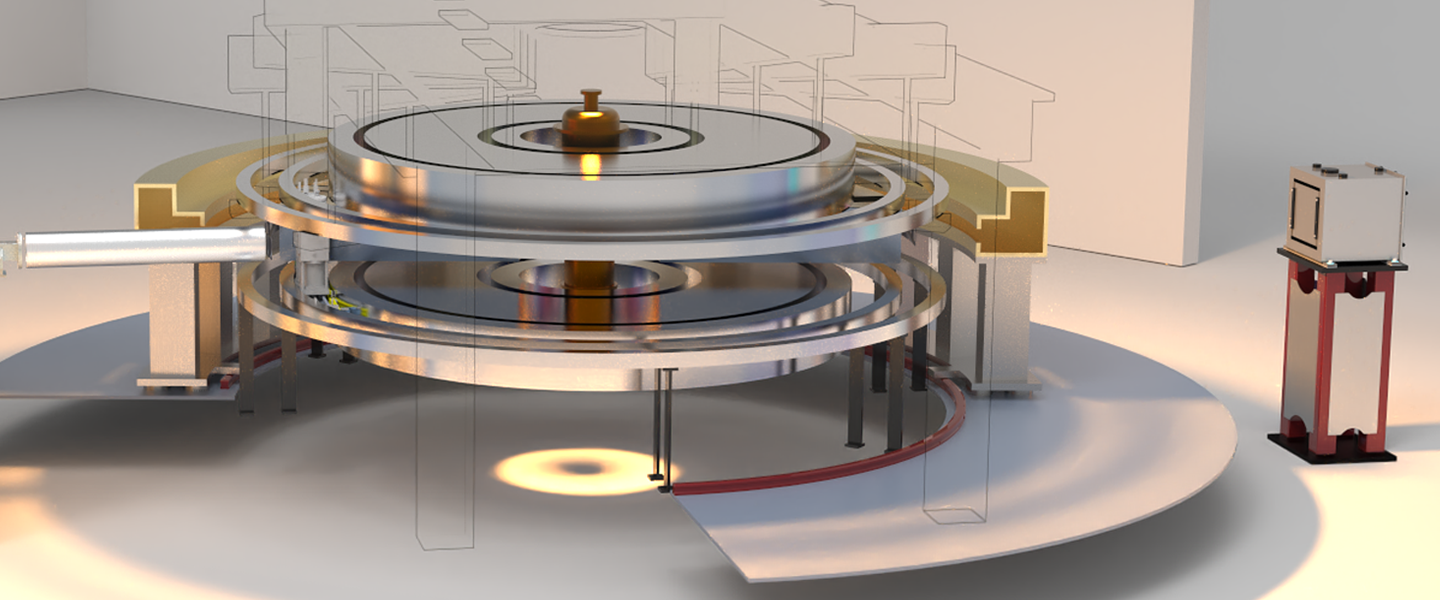Contacts
-
Point of Contact

EXPANSE (EXPanded Angle Neutron Spin Echo) is designed to conduct high-energy resolution studies (neV to μeV) of dynamic processes across a broad range of materials. The wide-angle detector banks will provide a coverage of nearly two orders of magnitude in scattering wave numbers and approximately four orders of magnitude in Fourier times. The instrument will offer unique capabilities , such as direct measurements of slow dynamics in a time domain over simultaneous wide Q-ranges for time-resolved spectroscopic studies.
The length and time scales covered by EXPANSE are complementary to other QENS techniques. Second, the significantly enhanced source brightness (a factor of ~20 compared to the first target station (FTS)) will enable the possibility of time-resolved spectroscopic experiments or non-equilibrium dynamic studies. The high flux of STS will also enable EXPANSE to measure incoherent dynamics, which is currently challenging because of the inherently low signal to noise ratio in incoherent scattering measurements. Moreover, EXPANSE, with its high detector coverage, will be able to measure efficiently the incoherent scattering signal, which is spread over the whole scattering solid angle.
The high estimated count rate will also make studies of small samples a possibility, which will be a critical improvement for many scientific communities, especially biology and magnetism, where the sample quantity is often a severe limiting factor. EXPANSES will offer a highly optimized beam for small volume of samples and its expanded scattering angle coverage will be ideal to perform grazing incidence NSE experiments, which is expected to broaden the user community significantly. In addition, EXPANSE will be a hybrid in the sense that it will be equipped with a fast chopper near the sample to function as a direct geometry chopper spectrometer (DGS mode) with polarized neutrons. In this mode, the magnetic field will be turned off and time-of-flight analysis will be used to expand the energy window offered by the NSE mode (standard operation mode) by two orders of magnitude on the high energy transfer side in the range of µeV to meV, while providing approximately one order of magnitude overlapping time range. This is essential for making EXPANSE a true wide-energy-range spectrometer, giving it a dynamic range of ~6 orders of magnitude if two wavelength settings are used.
| Available wavelength | 4 to 16 Å |
| Wavelength band | ~ 4 Å (15 Hz) |
| Incident beam divergence | <1.5 º |
| Maximum field integral | ~ 0.27 T∙m |
| Detector solid angle | 140º × 2.5º Array of 3He tube detectors |
| Momentum transfer range | 0.05 Å-1 to 3.14 Å-1 |
| Fourier time range | 30 ps to 90 ns (using 4 to 12Å) |
| Direct geometry mode | Energy resolution 10 μeV to 300 μeV Incident energy range 0.5 meV to 9 meV Corresponds to 0.1 ps to 100 ps |
Point of Contact
Oak Ridge National Laboratory is managed by UT-Battelle LLC for the US Department of Energy